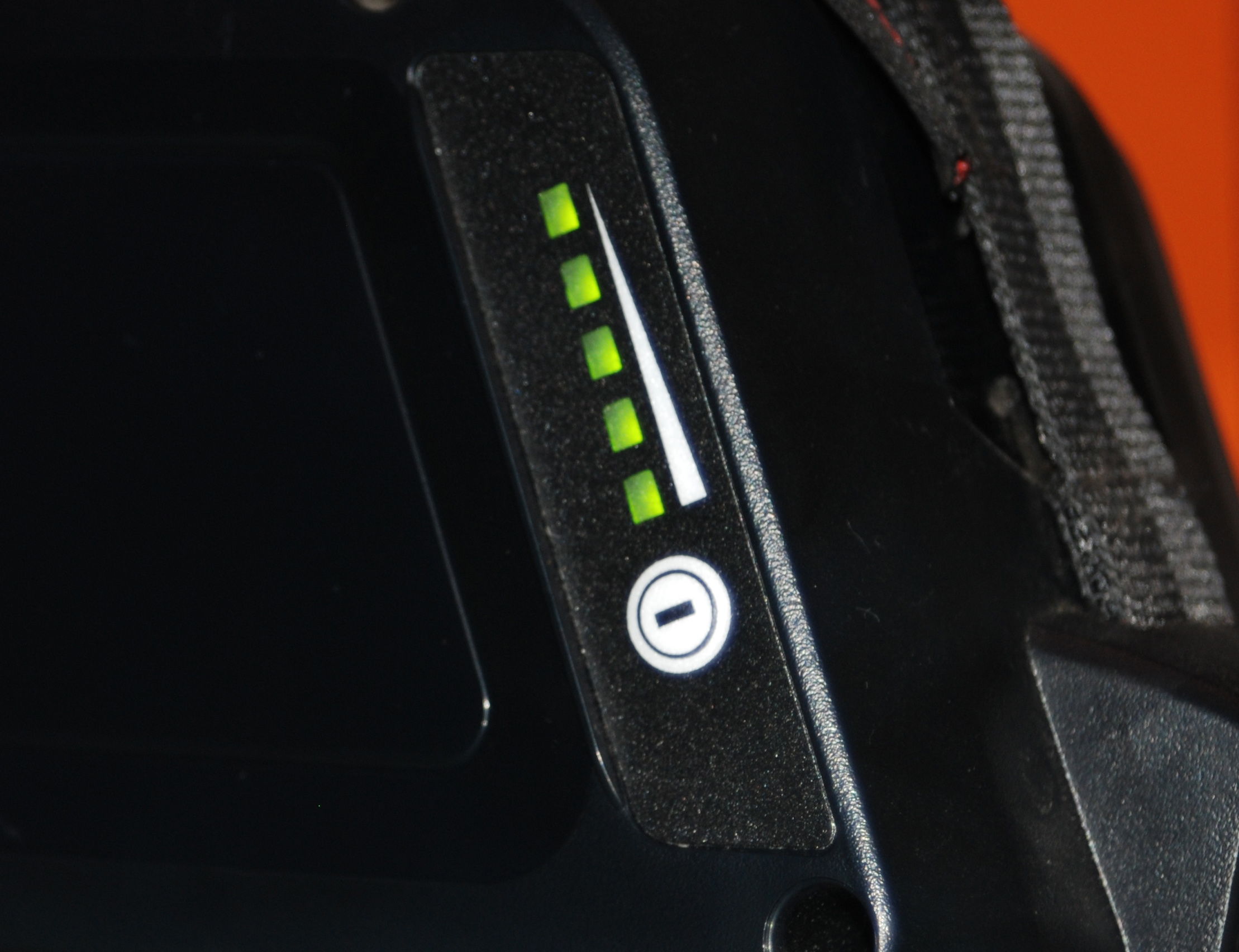The apparently unpredictable behaviour of the battery meters on electric bikes often causes puzzlement, so here is an explanation for the reasons, together with tips on how to interpret them. In fact it’s not possible to accurately measure what electric current there is stored in a battery since they are chemical devices, the electricity existing in a different form as a change of chemical state. Therefore, what these battery meters on our bikes do is use the fact that a battery voltage declines very slightly as it discharges. They check the voltage coming from the battery and register its level on the LED lights. This isn’t precise but gives a rough idea of the state of charge when a bike is standing still.
The problem can come when riding though. If the throttle is opened and the motor runs, it draws current, the voltage coming from the battery drops due to the increased load drain, and the LED lights reflect this drop in voltage. On a steep hill when the motor is working very hard, the drain of current is greatest, the voltage drop is also greatest, so the red or lowest light can come on despite there being plenty of remaining charge. The only way to measure the battery content on these meters when riding is if you shut the throttle and stop pedalling for a moment and then look at the meter. Though it’s still not a precise indication of content then, it’s good enough to be useful.
Some owners use the battery meter as an economy meter while riding, trying with careful throttle use to avoid the lights dropping and so get better range, but naturally it can be fiddly doing this. If this type of usage is intended, it’s better to buy one of the rather expensive (£50 to over £100) consumption meters like the “CycleAnalyst” or similar. These measure the current being used while riding and can assess what the battery had in it once all the current is used. It’s then possible to predict with some accuracy in future the remaining content in a battery – and this type of meter is also very easy to use to monitor consumption as you ride – and thus keep it low to get the best range.
The economic case for using these is limited since the small saving in charge current which could be achieved by careful riding with one could mean it would take years to recover the cost of the consumption meter. Therefore they can have the status of executive toy for many users. For testing and reviewing e-bikes they are invaluable of course.
Our thanks to Flecc for this article. Flecc is a long-time contributor to Pedelecs. If you have a question you’d like Flecc to answer please contact us here.



